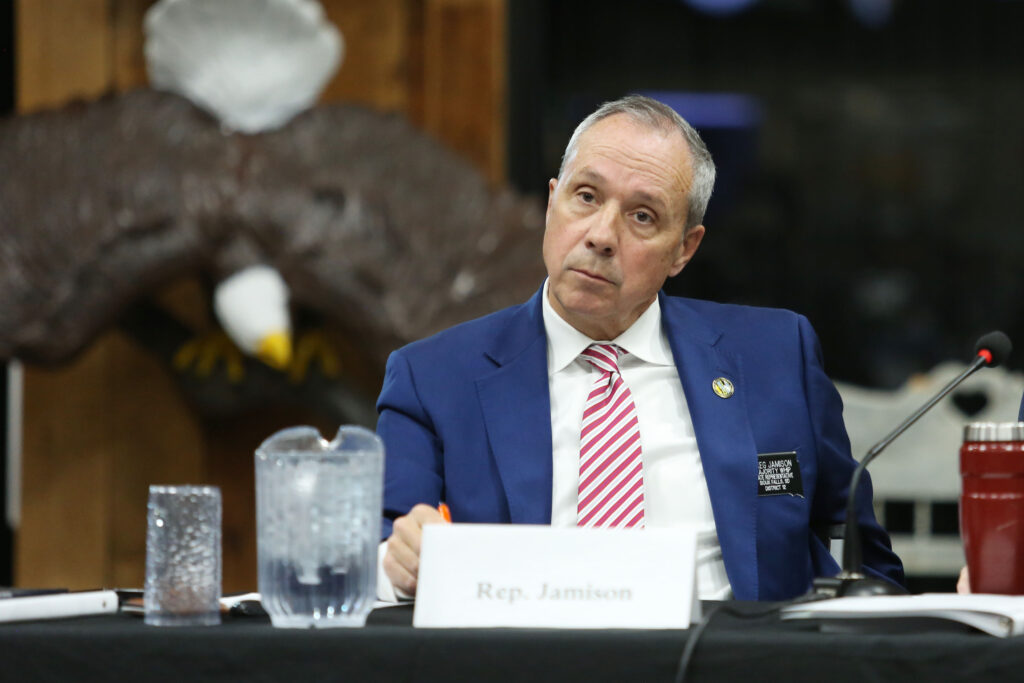State Rep. Greg Jamison, R-Sioux Falls, listens to a speaker during an interim legislative committee meeting on Oct. 29, 2025, in Sioux Falls. (Photo by Makenzie Huber/South Dakota Searchlight)
A South Dakota legislative leader predicted he can “almost assure” that “every legislator” will support reforms addressing inmate rehabilitation and recidivism during the legislative session that begins in January.
Sioux Falls Republican Rep. Greg Jamison, a House majority whip, made the comment as a legislative committee examining recidivism rates held a meeting Wednesday in Sioux Falls. Recidivism is the term applied to inmates who commit more crimes after being released from prison.
Jamison is also a member of a new task force taking up the issue, appointed by the governor and dedicated to rehabilitation transformations in the system.

Both groups came out of lawmakers’ disillusionment with the state’s rehabilitation efforts during discussions about the need for a new men’s prison. Republican Gov. Larry Rhoden promised to form the task force in exchange for support for the $650 million project in Sioux Falls, which he and lawmakers approved during a special legislative session in September.
The legislative committee will finalize its list of recommended legislation at its next meeting, targeting rehabilitation, diversion and supervision issues that affect incarceration and recidivism rates. Diversion of nonviolent felony suspects into rehabilitative programming, sentencing reform, more support for inmates reentering society, and addressing why parolees return to prison are all pieces that could impact South Dakota’s incarceration and recidivism rates, lawmakers on both groups said.
The new task force intends to look at rehabilitation throughout the remainder of 2025 and 2026. Task force chair and Lt. Gov. Tony Venhuizen said the task force will focus on short-term and long-term rehabilitation efforts happening with inmates while in prison.
Representatives with the Council of State Governments Justice Center spoke to lawmakers about helping improve rehabilitation efforts based on data from South Dakota and other states. The nonprofit worked with several other states to study and suggest criminal justice and prison reforms.
The nonprofit is already partnering with the state Department of Corrections through next spring to shore up the data tracking offenders who reenter South Dakota communities and better understand outcomes of inmates after they are released from prison. The task force voted to explore working with the nonprofit on Wednesday.

“We’ve struggled to kind of chart our path and goals and now our time is up,” Jamison said, “but this next committee, really, is going to have another window of time to evaluate and lay out a timetable and goals.”
A majority of inmates stay in the prison system for a year or less before being released. Ryan Brunner, senior policy adviser for the governor, said that timeline can limit the rehabilitation programs available to inmates. Upon admission, about 91% of male inmates and 97% of female inmates last year were diagnosed with a substance use disorder.
The task force plans to dive more deeply into rehabilitation options and community partnerships connected to programming for education, faith, tribal and behavioral health needs. Venhuizen said the group will likely meet again in December.
GET THE MORNING HEADLINES.


